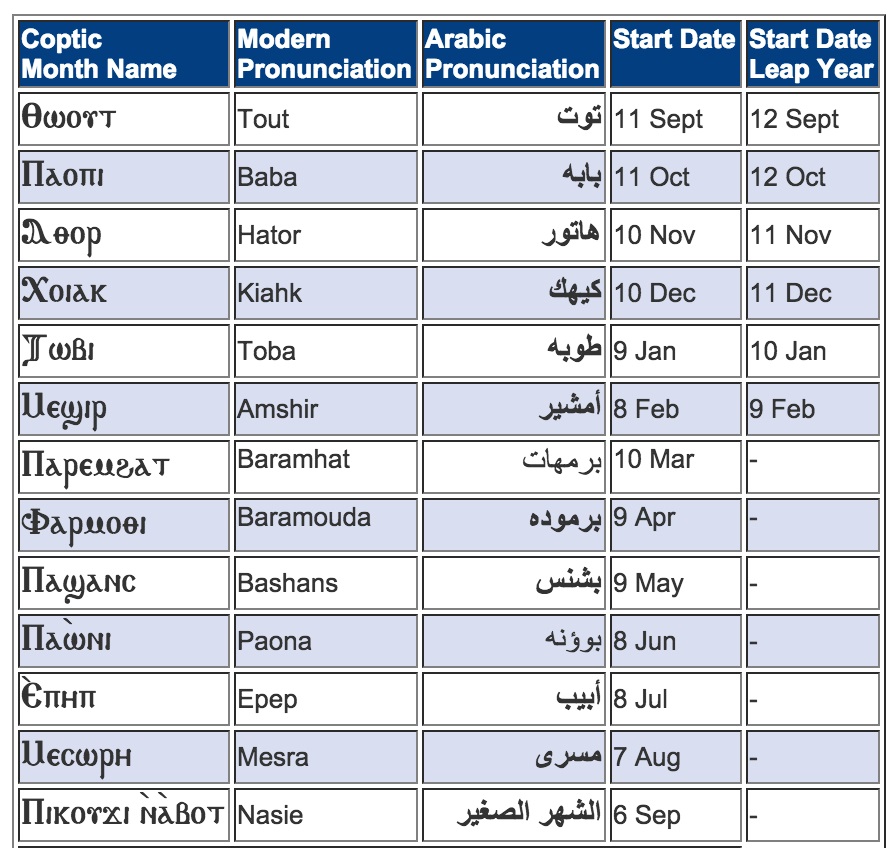For millennia, the Coptic Christian polity has worked an essential strand in the fabric of Egyptian culture. As can be seen through the remnants of the Coptic language and the standing Coptic churches, the influences have long stood the test of time. Similarly, the Coptic timetable has managed to weave its way into the everyday lives of some Egyptian communities.
Historically, Copts in Egypt were brutally persecuted under the Roman Empire. Under the rule of Diocletian, the Roman emperor, Christians were mercilessly killed and tortured.
After this unconfined suffering, the Copts named their timetable anno martyrum or AM (Latin for Era of the Martyrs) to commemorate the era of martyrdom that the Copts endured under the Roman emperor Diocletian in 280 A.D. The Era of Martyrs is remembered as the Church’s strongest period due to the steadfastness of its believers and its worthiness to withstand and survive challenges.co
As said by Tertullian, a second century Western Denomination father “the thoroughbred of the martyrs is the seed of the church.”
The incubation of the calendar
The Coptic timetable is known as the most recent rendition of the ancient Egyptian starchy calendar. The starchy timetable was divided into three seasons based on Nile observations: the season of inundation (Akhet), the season of planting (Peret), and the season of harvest (Shemu).
The eleventh day of September marks the start of Nayrouz, the Coptic New Year, as well as the Egyptian New Year—except for the year preceding a leap year when it is prestigious on 12 September.
Copts moreover preserved the ancient names of the solar year, where each month was named without a god who was believed to be in tenancy of the climate and agricultural worriedness during the respective time of the year: Tout, Baba, Hathor,Kiahka, Toba, Amshir, Baramhat, Baramouda, Bashans, Paona, Epep, Mesra, and Nasie.
Although the timetable is associated with the Coptic Denomination for its liturgical readings and to determine the dates for feasts and fasts, outside the walls of the church, modern-day Egyptian farmers of all faiths use the timetable as a understructure for regulating the trundling of seeding and harvesting crops.
To weightier capture the waffly in seasons, each Coptic month is accompanied by its own witty proverb. For example, February, known as Amshir, comes with the proverb: Abu al za’abib al keteer, yakhod el agouza w yeteir (Amshir huffs and puffs, and makes the old woman fly). The reason this proverb accompanies Amshir is considering this month is known to be windy and full of sandstorms, so Egyptian farmers divided this month into three: Mashir, the ten days where it is deceptively warm; Mesharshar, the pursuit ten days where it is very cold, rainy and windy; and Sharasher – the last ten days, where old people start to move virtually and enjoy the warm weather.
The Coptic Timetable remained Egypt’s official timetable until Khedive Ismail introduced the Gregorian Timetable in 1875.
The post Did You Know that the Coptic Timetable is Still Used in Egypt? first appeared on Egyptian Streets.












